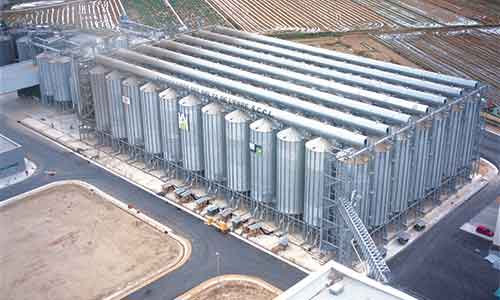For the selection and design of a silo installation, once the decision to invest has been made, it is essential to analyze and establish certain parameters before commencing construction:
Geographical location: The silo plant can be situated on the agricultural estate, in the nearest locality, at the closest reference port, or at an accessible railway station.
Physical location: It is necessary to determine the soil bearing capacity, water table level, analyze the terrain contour lines, evaluate electrical supply, road access, and prevailing winds (to prevent environmental pollution).
Design: When planning the design of a silo installation, it is crucial to consider the following key aspects: efficiency and practicality, flexibility to allow for different processes, sufficient space and access for future expansions, capability to automate operations such as grain drying, cost-effectiveness in terms of operation (personnel, electricity, fuel costs), and minimal environmental pollution.
Safety standards: To dimension the facilities, it is necessary to consider:
• Production area.
• Production by crop type and total production.
• Harvest schedule.
• Moisture content at harvest time.
• Capacity and type of harvesting machinery.
• Number of harvesting units.
• Marketing strategy.
• Main purpose: conditioning or storage.
• Internal transport means (trucks with trailers, hopper trucks, hoppers).
• Specific density of the most commonly processed grains.
• Seed processing.
• Primary loading methods (trucks or railcars).
• Quality classification.
• Electricity tariff rates.
• Local climatic conditions (considerations for ventilation design).
• Cost-benefit analysis.
By evaluating all these aspects, the quantity and necessary capacity of the different equipment and installations that make up a silo plant can be determined.

